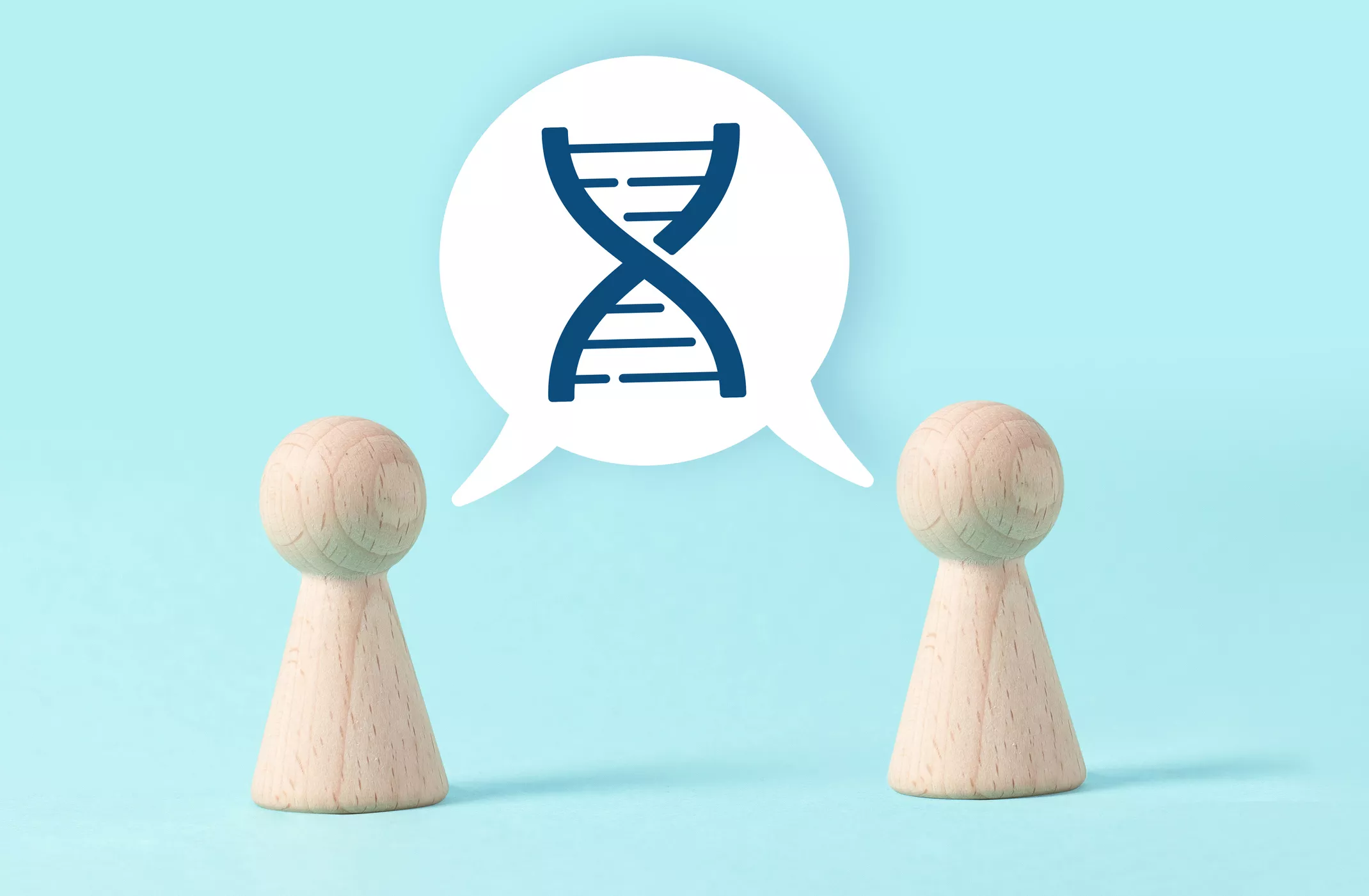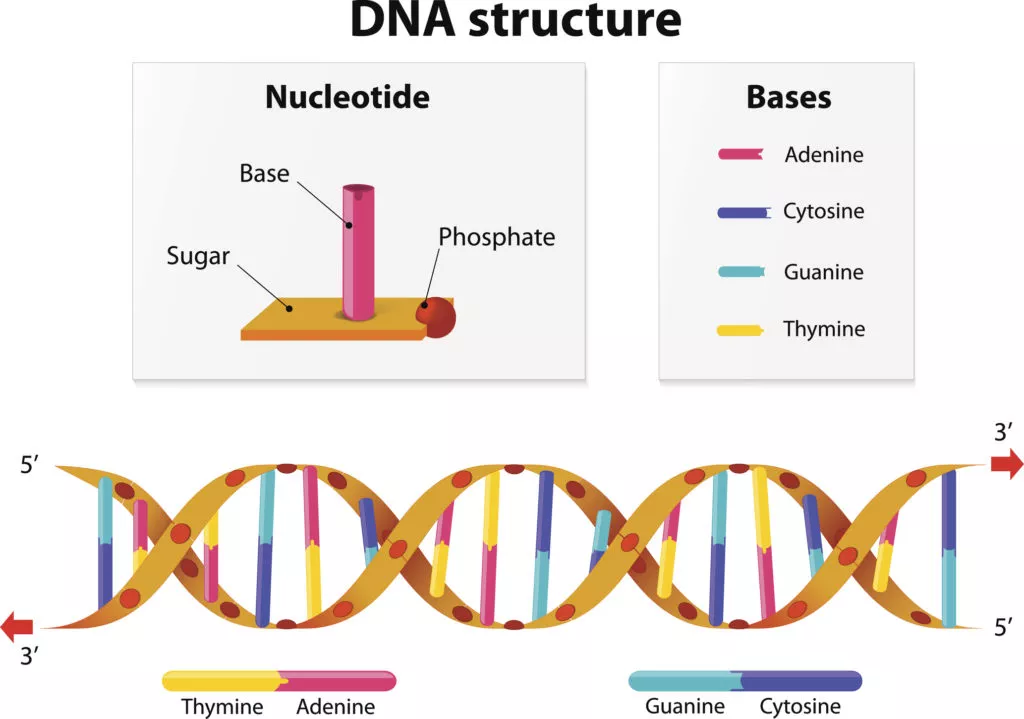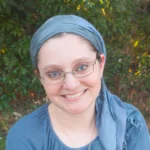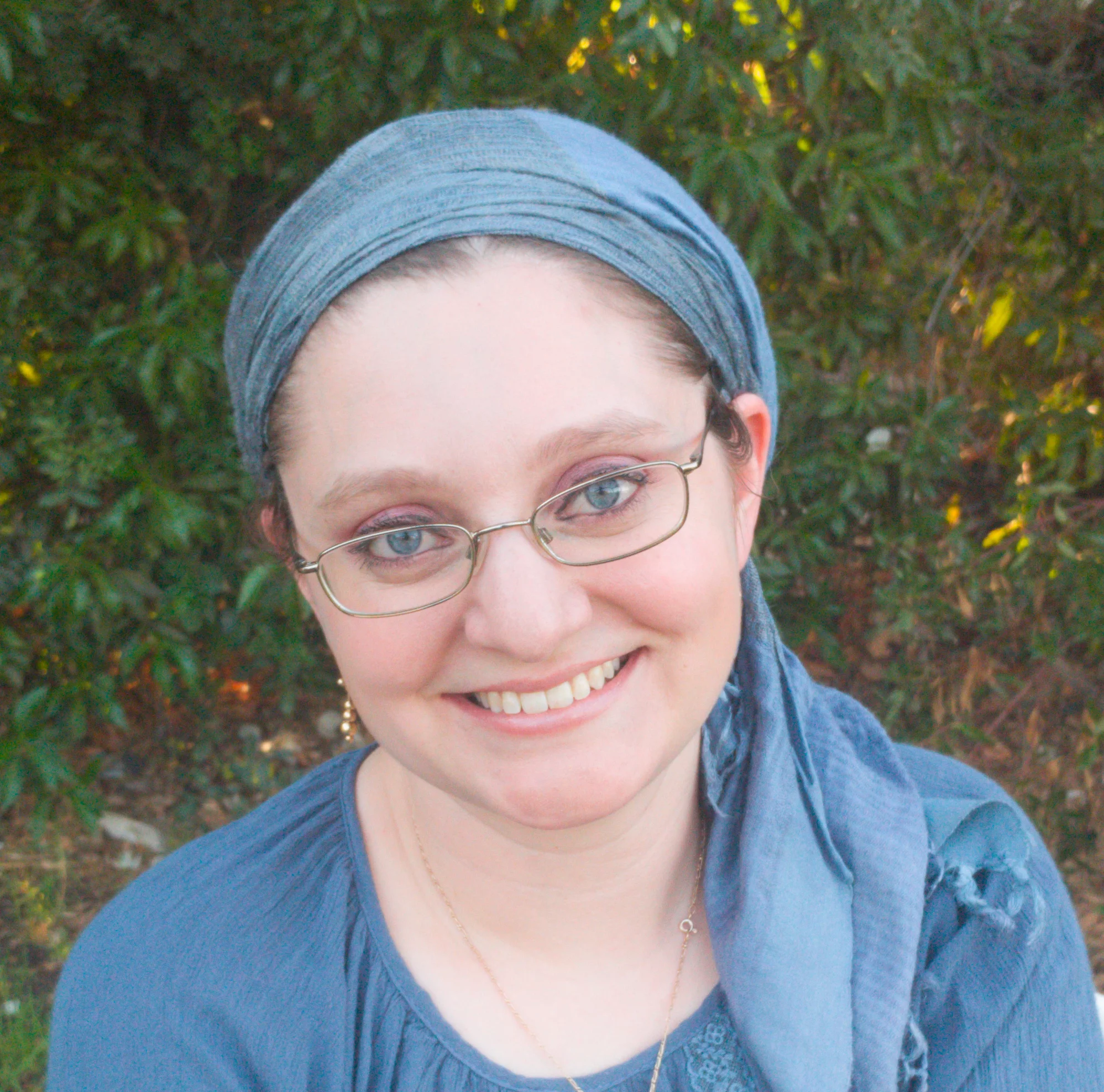
DNA Matching is the process of sequencing your DNA and comparing it to the DNA of other people in a database. When a person with a significant amount of DNA that is identical to yours is found, that can indicate that you have a common ancestor.
But how does this process work? How do DNA testing services like MyHeritage get from a saliva sample to a list of people who might be your relatives? In this article, we’ll explore how DNA Matching works.
How many DNA segments are there in humans?
All human beings have 22 pairs of autosomal chromosomes, and another pair of sex chromosomes: 23 pairs in all.
These chromosomes contain over 3 billion pairs of nucleotides, which are the building blocks of DNA. Each nucleotide contains one of 4 bases:
- Adenine (A)
- Thymine (T)
- Guanine (G)
- Cytosine (C)
The bases pair with each other to create a string of DNA. A pairs with T and G pairs with C.

The Human Genome Project, completed in the year 2003, confirmed that 99.9% of human DNA is identical. It is the remaining 0.1% that accounts for all the variance between human beings. So it is that 0.1% that DNA testing services analyze to discover DNA matches and calculate ethnicity estimates.
How DNA is inherited
The secret to DNA matching lies in DNA inheritance patterns.
According to the basic principles of heredity, you inherit a certain percentage of your DNA from each ancestor. The more distant the ancestor, the smaller the percentage of DNA you will share. For example, you inherit:
- 50% of your DNA from each of your parents
- 25% from each grandparent
- 12.5% from each great-grandparent.
Your siblings and cousins also inherit a certain amount of DNA from your common ancestor. And the amount of DNA you share indicates how distant your common ancestor is. For example, if you share 50% of your DNA with someone in your generation, that means you are full siblings, i.e., descended from the same parents. If you share 12.5%, that likely means you are first cousins, i.e., you share one pair of grandparents.
Determining whether you share a significant amount of DNA with a given person is what allows DNA testing services like MyHeritage to conclude that you have a common ancestor, and calculating the amount of shared DNA allows us to estimate how closely related you are.
How DNA Matching Works
So how do we determine whether and how much DNA you share with the other people in our database?
When your sample arrives at our lab, it undergoes a process of extraction and is transformed into a computer file containing your DNA data.
At MyHeritage, we examine 700,000 SNPs (single nucleotide polymorphisms) in your DNA. A SNP is a variation in a base pair of DNA that serves as a marker which allows us to distinguish your DNA from that of most other human beings. For example, if 90% of humans have a G base in a certain position on the genome, but you have an A there instead, that means you have a SNP at that position.
Your DNA data file contains a line representing each SNP we look at, indicating the base sequence in that specific location.
Once your DNA data file is complete, we analyze your results and compare them to results of other kits in our database to identify matching sequences.
Here’s a video about how the DNA analysis process looks at the MyHeritage lab:
You can learn more about the process of DNA testing and analysis in this article: How DNA Testing Works
How many DNA markers need to match?
There’s no hard threshold for how many SNPs need to match in order for a DNA Match to be significant.
The closeness of the match is expressed either in percentages (for example, 25% shared DNA) or in centimorgans (cM), a unit of measurement that indicates the length of a shared DNA segment.
The number of centimorgans or percentage of the match sometimes indicates the relationship clearly:
- 50% match/3400 cM = parent or child
- 25% match/1700 cM = grandparent, grandchild, uncle or aunt, niece or nephew, half-sibling
- 12.5% match/850 cM = first cousin, great-grandparent, great-grandchild, great-uncle or -aunt, great-nephew or -niece, half-uncle or aunt, half-nephew or -niece
The more distant the relative, the more variability there will be. Whether the match is significant for your research depends what you’re looking for and what your goals are.
Note that the number of shared segments can vary greatly — it’s the overall amount of shared DNA that indicates the relationship in these cases. However, when it comes to determining whether a distant match indeed shares a common ancestor with you, the length of the shared segments is more significant. You can read more about what makes a strong DNA match in this article: What Is a Good DNA Match from a Research Perspective?
Examples:
How many DNA segments do siblings share?
Full siblings share around 2550 cM of their DNA, which comes out to 50% of their DNA according to some methods of estimation or around 37.5% according to others.
Do twins have matching DNA?
Identical twins share 100% of their DNA. This is because identical twins are formed from one fertilized egg that splits in two and develops into two separate embryos. They started with the same combination of genetic material, so their DNA is the same.
Fraternal twins, on the other hand, are just like other siblings genetically and share 37.5%–50% of their DNA. Fraternal twins develop from two different fertilized eggs, each with their own unique combination of their parents’ DNA.
How many DNA segments do half-siblings share?
Half-siblings who share one parent will share around 25% of their DNA, or around 1700 cM.
How many DNA segments do first cousins share?
First cousins share around 12.5% of their DNA, or around 850 cM.
How long does DNA matching take?
This depends on the service provider. MyHeritage DNA kits take around 3–4 weeks to process once they have arrived at our lab.
You can learn more about how DNA matching works from the following resources:
- Webinar: Understanding DNA Matching technology with Ran Snir
- How-to video: How to Get Started with Your DNA Matches




